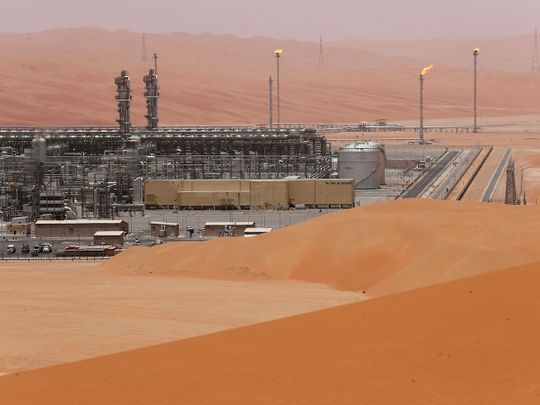
Dubai: If Saudi Arabia moves ahead with plans to float 1 per cent of the world’s most profitable company, Saudi Aramco, it could raise proceeds equivalent to the last 10 years of initial public offerings in the country.
There are still moving parts in what could be a game-changing IPO, but this week the company selected banks, including JPMorgan Chase & Co. and Goldman Sachs Group Inc, to work on the sale of a stake as soon as November. The oil exploration company may start with a 1 per cent stake in the domestic market, possibly adding another chunk later, before ultimately launching an overseas listing.
While Aramco’s valuation isn’t known, Crown Prince Mohammed bin Salman has pegged it at about $2 trillion, a number many consider to be inflated. Bloomberg Intelligence, for example, estimates the value at about $1.1 trillion, while other analysts’ forecasts are around $1.5 trillion.
Taking $1.5 trillion as a midpoint for a 1 per cent float, the amount generated could equal the combined proceeds of 72 companies that began trading in Riyadh over the past 10 years. Aramco’s 1 per cent would garner 2.5 times more than the IPO of National Commercial Bank, Saudi Arabia’s biggest lender by assets, the largest offering in the kingdom during the period.
Muted US exposure?
Saudi Aramco is considering a structure for its initial public offering that would prevent it from marketing the deal directly to fund managers in the US, people with knowledge of the matter said. The state-owned oil giant wants to avoid litigation risks that could result from selling the deal to US-based institutions.
Aramco is consulting with its bankers on the pros and cons of different deal structures, and it hasn’t made any final decision. Many foreign IPOs rely on the “Rule 144A” structure, which allows overseas companies to market offerings to institutional investors in the US. The method being considered by Aramco is a so-called “Regulation S only” transaction, which would limit it to selling stock to foreign buyers and overseas units of US fund houses.
While that means that Aramco could still market the IPO to big investors like BlackRock Inc. and Fidelity Investments via their foreign affiliates, US institutions without overseas subsidiaries would be left out. That would limit the pool of potential buyers for an offering that’s slated to be one of the biggest equity offerings in history.
Other Saudi companies have started taking steps to rope in US investors after the country began allowing foreign fund managers direct access to one of the world’s most restricted major stock exchanges. Earlier this year, mall operator Arabian Centres Co. conducted the first IPO by a Saudi company under Rule 144A, raising $659 million.












